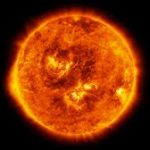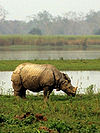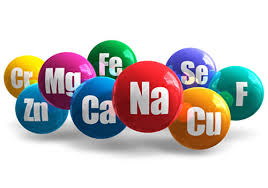Earthquakes and Safeguards: Everything Ought to be Known
Earthquake is one of the most devastating natural calamities. It is also known as tremor, quake or temblor. Quake can be resulted from human activity like nuclear explosion too. Many parts of the earth are prone to earthquake while some parts witness frequent tremors.
How does an earthquake occur?
An earthquake is the vibration felt on the surface of the Earth as a result of the movement of rocks underground. Under normal condition blocks of rock or plates stick together and do not move. If the rocks or plates happen to break because of pressure build up, earthquake happens with release of huge quantum of energy in the form of seismic waves. During this process, plates or rocks starts moving till they lock again.
What are focus and epicenter of an earthquake?
Focus is the point inside the crust where the pressure or energy is released. It is where the rocks break. The seismic waves are originated from this focus. The point on the surface of the earth above the focus is called epicentre. The severity of the waves is the maximum at epicentre and reduces as the waves travel away from epicentre. When the epicenter of a large earthquake is located offshore, it leads to displacement of seabed leading to tsunami. Earthquakes may also trigger landslides and volcanic eruption.
How is an earthquake measured?
The power of an earthquake is measured using seismometer that identifies the vibrations and plots the vibrations on a graph. Seismometers (seismograph) are instruments that are used to measure motion of the ground. The sources of motion can be many. Vibrations can be resulted from seismic waves generated by earthquakes, volcanic eruptions, landslides, and other sources such as usage of explosives. Seismograph produces a graph output seismogram. It is a record of the ground vibration at a measuring station as a function of time.
Richter magnitude scale or Richter scale, numbered from 0-10, is used to report the magnitude or strength of an earthquake. Richter scale assigns a magnitude number to mention the size of an earthquake. The Richter scale was developed in the 1930s. It is a base-10 logarithmic scale. Richter scale is used to cover the huge range of earthquakes. It mentions magnitude as the logarithm of the ratio of the amplitude of the seismic waves to an arbitrary minor amplitude, as recorded on a standardized seismograph (seismometer) at a standard distance. The energy released during an earthquake is normally proportional to the shaking amplitude. A tremor that registers 5.0 on the Richter scale has a shaking amplitude 10 times greater than a temblor that registered 4.0 at the same distance.
Which are some of the major earthquakes?
Some of the major tremors are listed below;
• Tremor with magnitude of 9.5 occurred in Vadivia, Chile on May 22, 1960
• Tremor with magnitude of 9.2 occurred in Prince William Sound, Alaska, US, on March 27, 1964
• Tremor with magnitude of 9.2 occurred in Indian ocean, Sumatra, Indonesia on December 26,2004
• Tremor with magnitude of 9.1 occurred in Pacific ocean, Tohoku Region, Japan, on March 11, 2011
• Tremor with magnitude of 9 occurred in Kachatka, Soviet union on November 4, 1952
What are the precautions to be taken during an earthquake?
The effects of an earthquake are devastating leading to loss of life and infrastructure. Among natural disasters, earthquake is considered the most dangerous as they often happen without any warning. It is necessary to have an idea about the safeguards to survive in the happening of an earthquake. They are mentioned below:
• Remain calm if an earthquake is noticed. Do not panic.
• The safest place during a quake is an open area. So if you are near an exit, run towards an open area. Stay away from power lines, buildings, boundary walls etc to be protected from falling debris or objects or collapsing buildings.
• When the temblor happens, if you are on higher floors and not near the exit on the ground floor do not try to run out from the building. Stay away from windows and glasses and do not stand on balconies, terrace or projections. Take protection under a sturdy table or desk. If tremor causes movement of table or desk, move along with it. It is better if head can be covered by a helmet, bag, or cushion. Stand near the corner of walls to save from large falling objects.
• Never use the lift and use the staircases to move towards ground floor. Power supply failure/ switch off may trap you inside the lift. Try to remain calm and avoid stampede. Just walk and never run. Before making exit from top floor, switch off the main switch, if it is nearby.
• If the quake occurs when you are outdoor, move away from buildings and power wires and stay in an open space till the tremor is over. When outside, the biggest danger is falling objects or collapsing buildings. If you are in a beach move towards land area as high tidal wave may happen after earthquake.
• Inside building, do not use candles, matches or lighters as fire may spread fast. Put out all fires.
• If your building or office has a disaster recovery plan, assemble at the predetermined assembly area, carry out a head count to rule out missing of persons and obey the instructions of the leader. Arrange for rescue and relief operation as per plans.
• Avoid fallen electric poles and wires.
• Contact the nearest Disaster Management Unit of the Government or other local authorities for rescue.
• Once the temblor is over, assist in first aid and evacuation of casualties if any. But never interfere in the work of the Rescue teams
• After an earthquake of high intensity, intermittent tremors may occur. So wait for solid information before reentering the building.










